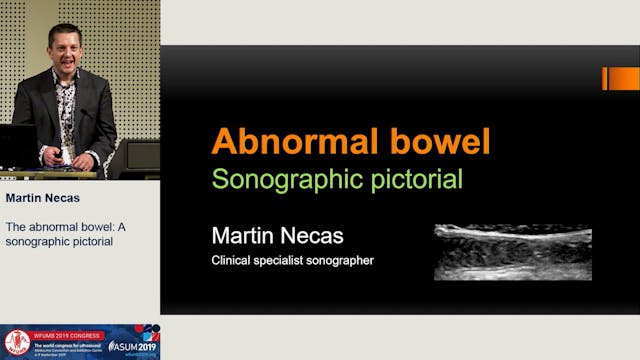Gallbladder polyps - incidental finding or potential cancer
ABDOMINAL
•
19m
The term gallbladder polyp (GBP) refers to any elevated lesion on the surface of the gallbladder mucosa. The majority of GBPs are so-called pseudopolyps (cholesterol-polyps, focal adenomyomatosis, hyperplastic polyps or inflammatory polyps) with no malignant potential. True GBPs includes adenomas and adenocarcinomas.
Gall bladder adenomas (GBA) are benign; however, they might have a malignant potential as seen in the adenoma-carcinoma sequence in colo-rectal cancer. It is; however, unclear how often adenocarcinomas have arisen from pre-existing adenomas.
GBPs are commonly detected as incidental findings on ultrasound (US) of the abdomen or on the histological examination after cholecystectomy.
Pseudopolyps are far more likely to be of size < 10 mm, whereas true polyps (adenomas and adenocarcinomas) are more frequently > 10 mm in size. Patients with polyps of 10 mm or greater should be treated with cholecystectomy.
Small GBPs < 5 mm are very common and accounts for over 50% of polyps. Fortunately, the probability of malignancy is nearly zero when the GBPs are less than 5-6 mm.
Growth of GBPs < 10 mm during follow up is rare. On the other hand, progression in size has been associated with malignancy and malignant potential.
Single GBPs are more likely to be malignant than multiple GBPs; and sessile GBPs are significantly more commonly associated with malignancy probably because most gallbladder cancers arise from flat dysplastic epithelium.
The diagnostic challenge is to identify the small group of patients with malignant and premalignant GBPs where surgically treatment (cholecystectomy) is indicated, and spare the remaining large group of patients with non-malignant and non-premalignant GBP for unnecessary cholecystectomy and unnecessary follow-up exams. Unnecessary cholecystectomies should be limited to avoid the potential complications related to this procedure. Unnecessary follow-up exams should be limited to reduce the economic cost related hereto; and to reduce the fear that is introduced when a patient is told that ìsomething in the gallbladder has to be controlledî.
Unfortunately, the level of evidence regarding guidelines for follow-up and treatment of GBP is low; and randomized controlled trials are lacking. Based upon best practice, I suggest these recommendations:
GBP > 10 mm: Surgical treatment (cholecystectomy) is recommended.
GBP of 7-9 mm: Follow-up after 12 and 36 months is recommended.
If (during the follow-up period) the GBP size increases 2 mm or if the GBP size reaches 10 mm, surgical treatment (cholecystectomy) is recommended.
GBP of 6 mm and less: No treatment or follow-up is recommended.
Up Next in ABDOMINAL
-
MR Enterography vs small bowel ultras...
MR Enterography vs small bowel ultrasound for Crohnís/inflammatory bowel disease. MR Enterography is the international gold standard, particularly initial staging. GIUS considered a highly accurate imaging modality and valuable for ongoing surveillance of disease.
-
Biliary interventions
As guidance methods for biliary interventions are used US, X-ray, EUS and ERCP. The Bbenefit for US is: availability, repeatability, daily visit of drainage, fast, permanent view, examination before / during / after the procedure, low cost, combination with X-ray, Interventionist is the curing do...
-
The abnormal bowel: A sonographic pic...
Bowel ultrasound is a powerful clinical problem-solving tool. In patients with lower abdominal pain, bowel ultrasound can help determine whether the cause of pain is urological, gynaecological or intestinal in origin. The presence of bowel wall thickening, surrounding inflammatory changes (creepi...



